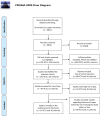Treatment of radius or ulna fractures in the elderly: A systematic review covering effectiveness, safety, economic aspects and current practice
- PMID: 30921377
- PMCID: PMC6438530
- DOI: 10.1371/journal.pone.0214362
Treatment of radius or ulna fractures in the elderly: A systematic review covering effectiveness, safety, economic aspects and current practice
Abstract
Background: The objective of the present study was to evaluate effectiveness, complications and cost-effectiveness of any surgical or non-surgical treatment for radius or ulna fractures in elderly patients. Secondary objectives were to analyze present treatment traditions of distal radius fractures (DRF) in Sweden and to calculate resource usage for its treatment.
Methods and findings: The assessment contains a systematic review of clinical and health economic studies comparing treatment options for radius or ulna fractures. The results regarding the effectiveness of the treatments are summarized in meta-analyses. In addition, the assessment contains a cost analysis for different treatment options commonly used for DRF care, and an analysis of registry data on the incidence and treatment of DRF. In total 31 randomized controlled trials were included in meta-analyses. When comparing functional outcome for plate fixation versus non-surgical treatment for DRF, there were no clinically important differences at one-year follow-up (mean difference [MD], -3.29, 95% CI, -7.03; 0.44). Similar results were found when comparing plating and percutaneous methods with respect to functional outcome (standardized mean difference [SMD], -0.07, 95% CI, -0.21; 0.07) and grip strength (MD, -3.47, 95% CI, -11.21; 4.28). There were no differences for minor complications, (risk difference [RD], -0.01, 95% CI, -0.07; 0.05) whereas major complications were less common for the percutaneous group, (RD, 0.02, 95% CI, 0.02; 0.03). Given the low number of studies, the evidence above was rated as moderate certainty. The cost for plate fixation versus plaster cast was estimated to 1698 compared to 137 US dollars. For DRF, plate fixation increased in Sweden between 2005 and 2013, and was the most common surgical method in 2013.
Conclusions: Surgical treatment of moderately displaced distal radius fractures in elderly patients offers no clear benefit compared to non-surgical treatment. Plating procedures have become more common during the second millennium and involve higher costs and higher risk of major complications than percutaneous options.
Conflict of interest statement
The authors have declared that no competing interests exist.
Figures


















References
-
- Mattila VM, Huttunen TT, Sillanpaa P, Niemi S, Pihlajamaki H, Kannus P. Significant change in the surgical treatment of distal radius fractures: a nationwide study between 1998 and 2008 in Finland. J Trauma. 2011;71(4):939–42; discussion 42–3. Epub 2011/10/12. 10.1097/TA.0b013e3182231af9 . - DOI - PubMed
-
- Mellstrand-Navarro C, Pettersson HJ, Tornqvist H, Ponzer S, Author A, Karolinska Institute D, et al. The operative treatment of fractures of the distal radius is increasing: Results from a nationwide swedish study. Bone and Joint Journal. 2014;96 B(7):963–9. 10.1302/0301-620X.96B7.33149 - DOI - PubMed
-
- Wilcke MK, Hammarberg H, Adolphson PY. Epidemiology and changed surgical treatment methods for fractures of the distal radius: a registry analysis of 42,583 patients in Stockholm County, Sweden, 2004–2010. Acta orthopaedica. 2013;84(3):292–6. Epub 2013/04/19. 10.3109/17453674.2013.792035 - DOI - PMC - PubMed
Publication types
MeSH terms
Substances
LinkOut - more resources
Full Text Sources
Medical
Miscellaneous

